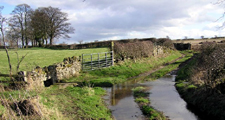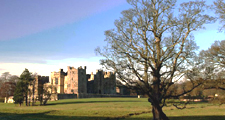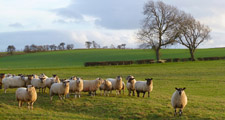Lowland Vale
Land Management
Natural Features, Watercourses and Wetlands
- Fence river and stream banks against livestock to prevent erosion and allow natural regeneration of bank-side vegetation.
- Protect and conserve ponds and wet grasslands in low lying carrs. Restore wetness to former carr land where possible by raising water levels in ditches.
Farmland
- Establish uncultivated margins along hedgerows, woodland edges and watercourses. Avoid cultivation under the canopy of hedgerow trees.
- Maintain and enhance semi-improved pastures and meadows by adopting appropriate stocking levels or cutting regimes and avoiding improvements such as drainage, ploughing and reseeding. Limit the use of fertilisers and herbicides.
- Restore former meadows and restore diversity to improved pastures where possible by reseeding or the use of hay crops from local meadows as a seed source.
Trees, Woodlands and Forestry
- Conserve and restore ancient woodlands.
- Protect and maintain existing hedgerow trees. Avoid close cultivation in arable fields.
- Plant new hedgerow trees (Ash, Oak) or tag saplings to replace the maturing stock.
- Plant new small and medium sized broadleaved (oak) woodlands, respecting field patterns, and avoiding sites of nature conservation or archaeological interest.
- Increase the proportion of locally native species when restocking plantations.
Field Boundaries
- Protect and maintain existing hedgerows.
- Restore old field patterns by reinstating hedges where they have been replaced by fences or removed in enlarging arable fields.
- Renovate overgrown or gappy hedges by laying or coppicing and gapping up.
- Allow trimmed hedges to grow higher and broader. Consider trimming every second or third year rather than annually.
Cultural Features
- Protect archaeological features including rigg and furrow from damaging activities such as cultivation, overstocking, or poaching.
- Conserve and maintain traditional farm buildings.
- Conserve and restore parklands, respecting designed elements and veteran trees.
Development
Agricultural Buildings
- Site new farm buildings close to existing buildings where possible, and reflect their scale, character and materials.
- Reduce the impact of larger modern buildings by careful selection of colour, breaking up mass and planting screening belts of native species.
Housing and Economic Development
- Maintain the separation of villages and the rural character of the countryside between them in planning for new development.
- Screen new development on settlement edges with substantial structure planting of native oak woodland.
- Protect and conserve the character of villages and towns by ensuring that new development respects their scale, structure and vernacular character.
- Retain open green spaces within villages, and particularly village greens, old gardens and orchards, and tofts or garths.
Energy, Telecommunications and Infrastructure
- Site communications masts on buildings in urban areas where possible – or close to existing buildings, tree groups or woodland edges in the open countryside.
- Avoid ‘urban’ detailing and street lighting on country roads.
Minerals and Waste
- Avoid damage to sensitive natural landforms, mature landscape features and semi-natural habitats in selecting and operating mineral sites.
- Avoid breaching local skylines with extraction areas or storage mounds.
- Restore sites to semi-natural oak woodland, neutral grassland and wetland habitats using natural regeneration where appropriate.
Tourism and Recreation
- Tourism and recreational development should be undertaken in such a way as to avoid any urbanising influence on the landscape. New buildings should, where possible, reflect the scale, form, materials and vernacular detailing of traditional farm buildings in the area.
- Facilities like chalets and caravan parks should only be developed or extended where there is a high degree of year-round visual containment – either from the topography or robust woodland cover – so that they do not detract from the rural character and scenic quality of the area.
- Golf course development should seek to conserve and reinforce landscape character by retaining mature landscape features and planting new native woodlands and parkland trees. Avoid prominent locations for built elements like buildings, driving ranges and ball-trap fencing. Develop species rich grassland in roughs to increase biodiversity.
- Equestrian facilities should be sited close to existing farm buildings where possible, and reflect their scale, character and materials. The impact of larger buildings should be reduced by careful selection of colour, breaking up mass, and planting screening belts of native woodland.



